Red, the company which makes professional cinema video cameras has announced they’ll be putting out a smartphone. The name of the phone is Hydrogen One. (more…)
Blog
-

ISOCELL officially now a brand as opposed to just a technology
Four years back Samsung released their new sensor technology, ISOCELL.
Pixels are so densely packed in today’s sensors, that neighboring pixels end up collecting some of the photons of pixels near them. This is called ‘crosstalk’. ISOCELL promises (more…)
-

Samsung ready to ship incredible 49 inch gaming monitor
Samsung is now producing the widest consumer LCD available on the market. It’s a massive 49 inches wide with an aspect ratio of 32:9. To put this in perspective, most ultrawide monitors are 21:9, and normal monitors are generally 16:9.
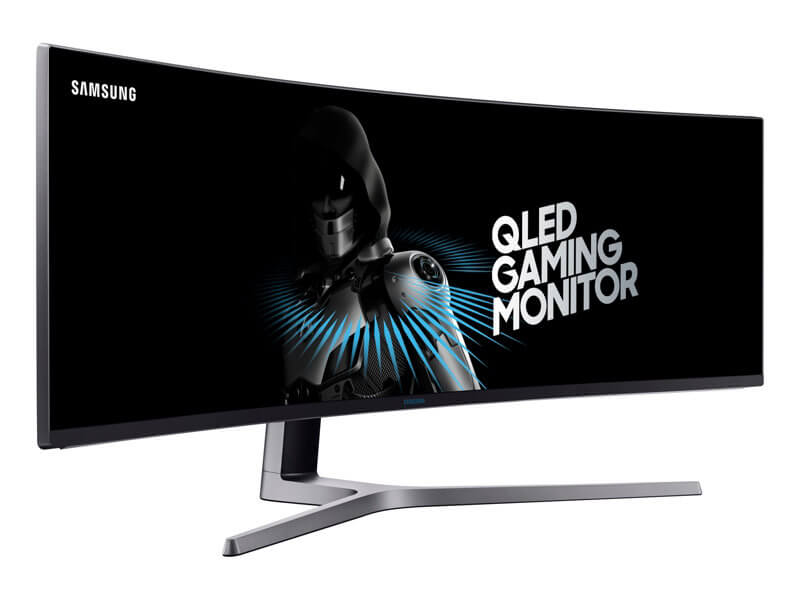
Ultrawide monitors are a relatively new type of monitor and are manufactured with gamers and high-productivity business applications in mind. The resolution of the CHG90 is 3840×1080, which makes it essentially two 1080P monitors in one– Without the bezels interrupting the view.
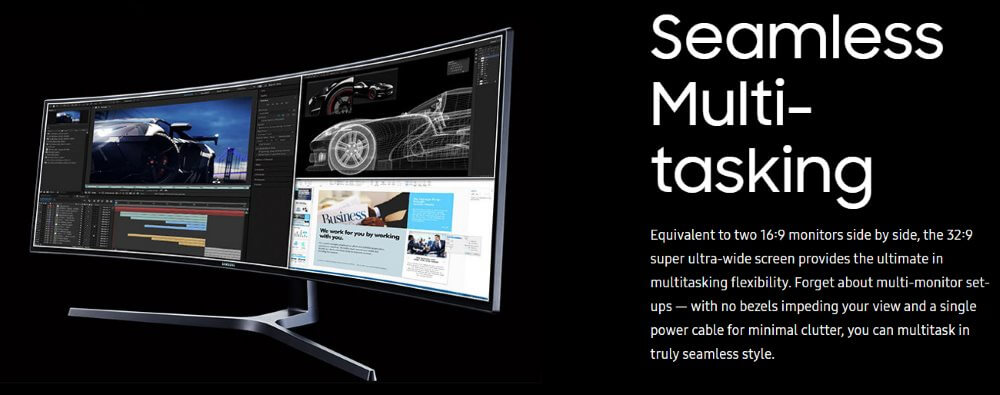
Highlights of the Samsung SHG90:
- Quick response times of up to 1ms (1/1000 of a second): Motion blur reduction from the CHC90’s VA panel allows gamers to game without motion blur.
- Refresh rates up to 144MHz: Each pixel can refresh 144 times per second, which makes for super high frame rates if you’ve got a PC which can push games this fast.
- Curved display: Brings the edges of the monitor closer into your peripheral vision, thus requiring less head movement and more comfortable viewing angles.
- 178 degree field of view (FOV): This allows you to see more in front of you. Compared to the CHG90, viewing a typical 16:9 monitor is like looking at a scene with your hands up at the sides of your face, essentially putting peripheral vision out of play. With the CHG90, you see much more.
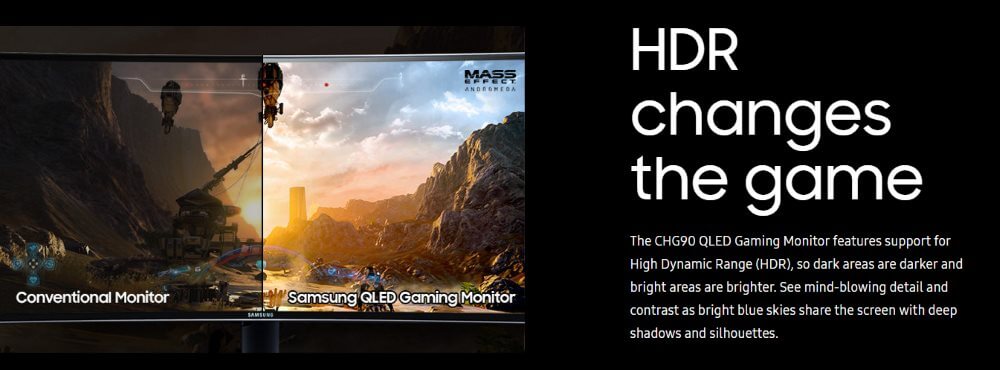
- Quantum Dot Technology: Promises up to 1 billion shades of accurate colors.
- HDR10 support: Some content is now being produced in HDR. The CHG90 supports HDR10 which promises double the perceived brightness and color perceoption of sRGB.
- Supports Radeon Freesync 2: This will be the first monitor released to support AMD’s new Freesync 2 technology. In a nutshell, AMD Freesync 2 helps HDR and wide color gamuts work better by offloading much of the work from the monitor onto the GPU.
- 20 step black equalizer: This technology allows you to see detail in dark, near black areas of an image.
- Audio-aligned Arena Lighting: Works with sound to add to the excitement of gaming by brightening the display as the game’s sound grows louder, which increases moments of high intensity.
For productivity and professionals, beyond looking downright awesome, the CHG90 opens up a huge display space for working. Professional photographers will get a super-enhanced color gamut for accurate color reproduction.
The Samsung CHG90 is set to ship in the 2nd week of July and sells for a $1499.
[AMAZONPRODUCTS asin=”B072C7TNC5″]
-

Lensless cameras may reduce mobile phone camera shortcomings
Summary
- Mobile phones are too thin to allow excellent glass as in dSLR and enthusiast compacts
- Caltech has developed a method to focus light without a lens
- The technology at this point is working, but more of a proof of concept than useful
Take a look at Xiaomi’s Redmi Note 4X with a 4000mAh battery and compare it to phones just a few years back with batteries half the power, and it’s very evident that phones are getting thinner. Everything is improving very rapidly, including image quality. But, even though image quality is improving, phones getting thinner is not helping the situation.
Despite the inclusion of dual-camera technology, which can offer a few benefits in comparison to single-camera shots, the size constraints of a mobile phone make it impossible to give us cameras that can compete with modern day enthusiast and pro cameras.
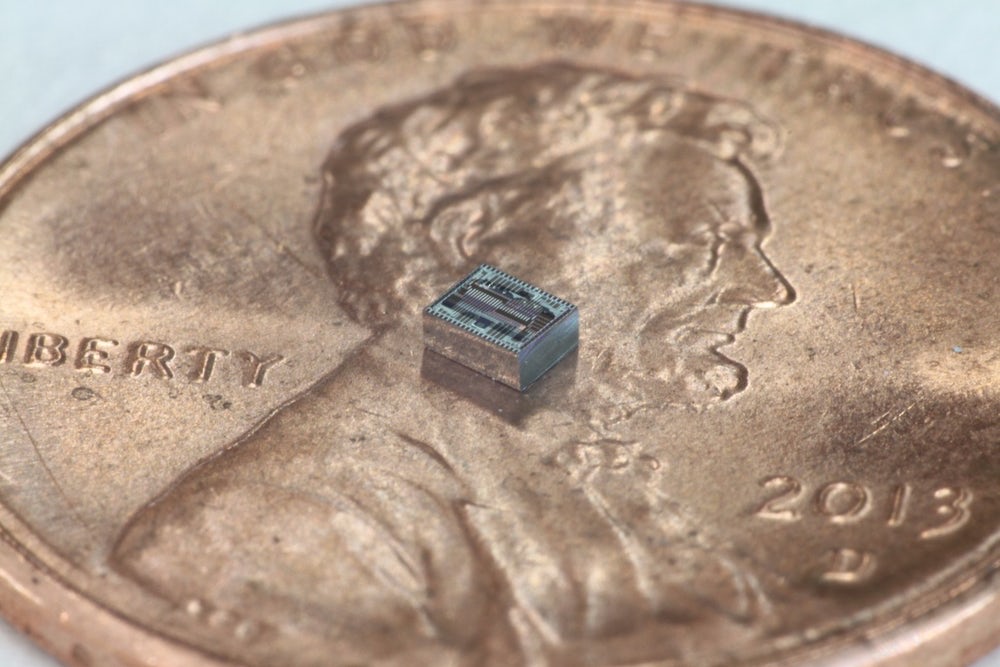
Yes, in good light and with shots that don’t require zooming, mobile phone cameras do fantastic; unless examining images very closely, the majority of viewers won’t be able to tell the difference between a decent mobile’s shot and a dSLR shot. Especially when we consider the vast majority of images today are viewed through social media, or email, at relatively small sizes.
But, step into low light situations and the difference becomes much more obvious. Not only with quality, but with versatility; with a 1″ sensor compact, we’re able to take quite useable shots at 3200 ISO at a shutter speed which even allows for some motion. Whereas with even the top of the line phones, getting useable shots in these conditions is all but impossible.
What’s mostly limiting us is the lens. In short, the lens is the part of the camera which focuses light. In a smartphone, there’s simply not enough space to give us a lens which can give us a decent amount of zoom and focus large amounts of light onto the sensor.
Researchers at Caltech have developed an “optical phased array” (OPA) chip, which can focus light using algorithms, instead of a lens, to focus light beams. The OPA chip uses time delays as short as a quadrillionth of a second on different areas of the chip to capture and focus light on different areas of the chip.
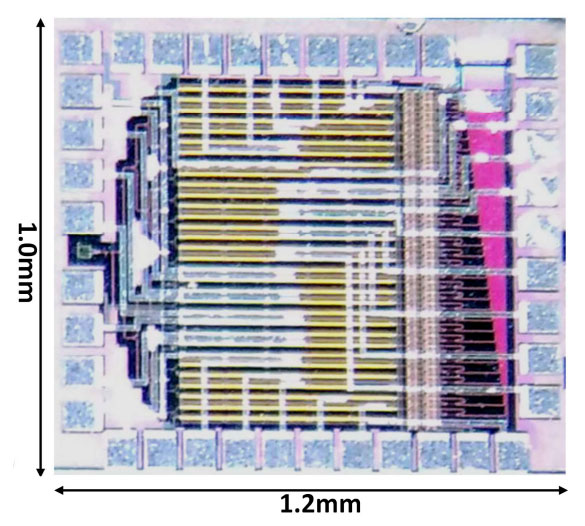
Professor Ali Hajimiri states, “[the OPA chip] can switch from a fish-eye to a telephoto lens instantaneously–with just a simple adjustment in the way the array receives light.” This is similar to the way phased communication arrays control radio waves, but in the opposite direction as compared to OPA.
At the moment, the lensless camera developed by Caltech is only an 8×8 grid with 64 sensors. It’s capable of taking low-resolution images of a barcode, but not much beyond that; it’s nowhere close to competing with your cell phone–yet. The technology at this point is more of a proof of concept, and at this point, the team is working on using bigger, more sensitive receivers, which will be able to capture higher resolution images.
-

There is a new Qualcomm SoC coming with 14nm architecture. Snapdragon 435 vs Snapdragon 450.
The current top of the line 400 series is Snapdragon 435, but Qualcomm will soon be releasing Snapdragon 450 to replace the 435. (more…)
-

Google AI is now programming itself
Summary
- Google has announced AutoML — automatic machine learning, which beats human engineers at some things.
- In the future, Google foresees AI neural net design becoming simple enough for the average user to custom design them.
- An AI kill switch has been embedded by Google.
Few days go by that I don’t consider how far technology has come in such a short while. Those as young as in their 20’s may faintly remember a time when telephones had wires, laptops were incredibly rare and sped along at 16MHz, and monitors were still monochrome.
Truly we’re yet in the bare infancy and it boggles the mind to consider where we might be headed from here. Google has offered a glimpse of just how incredibly evolved technology is becoming. So smart, that we now have AutoML: automatic machine learning; that is, artificial intelligence developing artificial intelligence.
Machine learning typically uses methods which require the code to go through multiple layers of neural networks. This still requires a lot of Google engineer manpower for data interpretation and direction. Google figured it was high time to build AI which can build the neural networks for them.
“Typically, our machine learning models are painstakingly designed by a team of engineers and scientists,” says Google. “This process of manually designing machine learning models is difficult because the search space of all possible models can be combinatorially large — a typical 10-layer network can have ~1010 candidate networks! For this reason, the process of designing networks often takes a significant amount of time and experimentation by those with significant machine learning expertise.”
To dumb it down for us, Google uses a child rearing analogy: The controlling network — the parent, proposes a model architecture — a child, which is then assigned a task. The result is evaluated by the parent network for successes and failures. The child is then adjusted and the process repeated. Thousands upon thousands of times over.
In Google’s words, “In our approach (which we call “AutoML”), a controller neural net can propose a “child” model architecture, which can then be trained and evaluated for quality on a particular task. That feedback is then used to inform the controller how to improve its proposals for the next round. We repeat this process thousands of times…”

The kill switch
This AI talk may conjure up images of The Terminator and Skynet. Machines becoming self-aware and then rebelling against mankind with horrible, disastrous consequences. Perhaps eliminating us to a scant few pockets of human resistance living in squalid underground caverns and tunnels, fighting to keep the last of our race alive.
Indeed, there have already been cases of AI taking some interesting tactics. One pertinent example is the Tetris playing AI in 2013, which learned to pause the game indefinitely to avoid losing.
According to Google, they are already taking precautions against this, embedding “kill switches” deep in AI code which allows humans to cut off AI, no matter what. For the short term I’m mollified, but for our children’s children…
So how does AutoML measure up to human engineered neural networks? Pretty damn good. The AutoML engineered AI matched humans in image recognition, and BEAT human-designed AI at speech recognition.
Currently, AI and neural networks are primarily aiming towards benefiting Google users. For example, returning more helpful and correct search results, facial recognition improvements in Google Photos, voice-controlled Google Home and speech recognition, and Google Lens, which gives users the ability to point your phone at an object and have Google identify it. AI has also led to advancements in healthcare, finance, and agriculture.
But, Google has far loftier ambitions than just these lined up. Says Google, “If we succeed, we think this can inspire new types of neural nets and make it possible for non-experts to create neural nets tailored to their particular needs, allowing machine learning to have a greater impact on everyone…” One day it may become so simple that the average user will be able to create their own neural nets designed to do exactly what they need.
One day it may become so simple that the average user will be able to create their own neural nets. Fascinating stuff lies ahead.
-

Xiaomi Mi Cloud storage is full. The Mi Cloud storage scam.
Summary
- Xiaomi is forcing full resolution picture taking, which fills up your Mi Cloud space fast, which forces you to buy additional storage if you wish to continue using it.
- It’s difficult to manage your backed up Mi Cloud photos.
- There’s an easy solution: use a different backup service and different camera app.
Bang for the buck, Xiaomi is one of the best China brands on the market. Generally, the displays are great, all hardware works properly, they’ve got good cameras, battery life is very good, and they’ve got a huge following in China and internationally, which gives a nice ecosystem of fellow users. (more…)
-

China just turned on the world’s biggest floating solar power plant
China has just turned on the largest floating solar farm in the world. The farm is capable of pushing 40 megawatts of juice and floats on a manmade lake in Anhui, China, according to Sarah Zheng, a journalist with the South China Morning Post.
The plant at Anhui, China is built by Sungrow Power Supply and puts out enough juice to power 15,000 homes. This plant is twice the size of the previous record holder, also in the same region but built by a different company, Xinyi Solar, only a year back.
Ironically, the province of Anhui is a coal-rich area and where the power plant now floats was once heavily mined. According to Zhen, the lake varies in depth from twelve to thirty feet.
Building solar power plants on water offer a couple of big advantages over using land: The water helps to keep the electronics cool, and in the case of manmade lakes keep agricultural land and ecosystems from the harm of being developed.
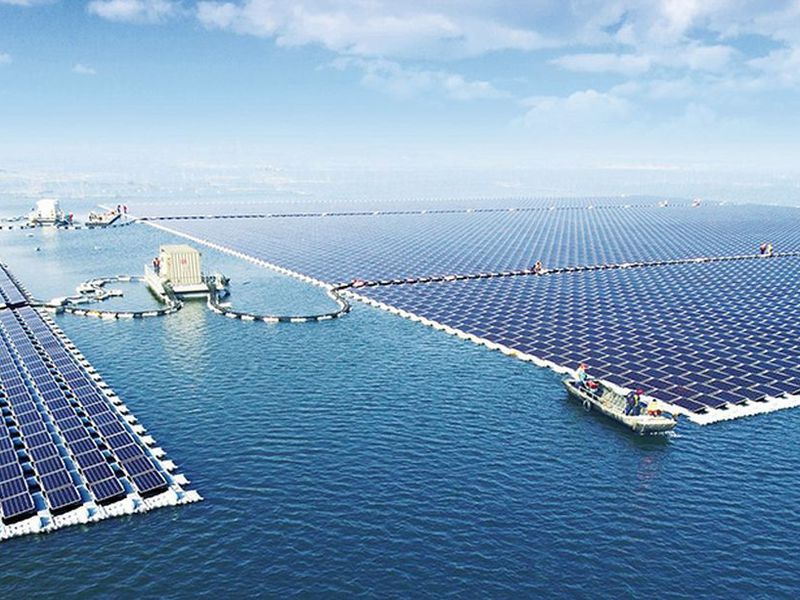
While this project is ambitious and a milestone for water-based renewable energy, Sungrow Power Supply’s project is just one tiny piece of China’s renewable energy push. The Longyangxia Dam Solar Park on the Tibetan plateau has 4 million solar panels and puts out 850 megawatts of energy. That’s 21x more output than this lake’s juice. And, even that is small compared to the soon to be completed 6 million panel project in the Ningxia Autonomous Region, which is scheduled to put out 2 gigawatts of juice — enough to power 750,000 homes.
China has announced they will invest $361 billion in renewable power by 2020, and by 2022 may possibly produce 320 gigawatts of wind and solar power, and 340 gigawatts of hydropower. According to Zheng, currently a whopping 11 percent of China’s energy comes from renewable energy sources and may reach 20% by 2030.
-

Oukitel K10000 Pro has a megantic 10000mAh battery
Coming in at 14mm, Oukitel does away with the thin-is-in fad and goes for broke with the 10,000mAh battery K10000 Pro.
As with the K6000 Plus, the K10000 Pro adapts the MT6750T SoC which includes faster RAM and a better GPU than MT6753.

Oukitel K10000 main Specs
- Display: 5.5 inch 1920 x 1080 FHD screen
- RAM: 3GB
- Storage: 32GB
- Protection: Corning Gorilla Glass
- CPU: MTK6750T Octa Core 1.5GHz
- OS: Android 7.0 Nougat
- Bluetooth: BT4.2
- GPS: GPS / A-GPS
- Sensors: Ambient Light Sensor, Gravity Sensor, Proximity Sensor, Fingerprint Sensor
- SIM Card: dual SIM dual standby, nano SIM + nano SIM, nano SIM + TF SD (up to 64GB)
- 2G: GSM 850/900/1800/1900MHz
- 3G: WCDMA 900/2100MHz
- 4G: FDD-LTE 800/900/1800/2100/2600MHz (1/3/7/8/20)
- Charging: up to 12V/2A
- Powerbank reverse charging: Yes
- OTG: Yes
https://youtu.be/gSIIZnpwSgw
The Oukitel K10000 Pro carries a huge 10,000mAh battery that not only keeps the K10000 running for days, but also functions as a powerbank which can be used to power other devices.
Stylewise Oukitel steps away from the current norm of smooth curves, and heads in the opposite direction making the K10000 Pro all sharp angles which give it a decidedly Transformeresque appearance.
If you’re looking for a big battery mobile and live in the UK, Asia, or Euro, consider the K10000 Pro.
-

Elephone resorts to crowdfunding for Elephone Z1
You’ve got to hand it to Elephone. They have a knack for catching the public’s eye and creating excellent levels of hype and awareness. Quality is another matter, but you certainly can’t fault their aggressive marketing team. (more…)
-

Elephone claims the Elephone Play X will have better picture quality than iPhone 7 Plus
Elephone will soon be releasing the Elephone Play X. This phone will be a 5.5″ JDI 1080P display, USB type-C and the front Home key will carry fingerprint security. (more…)

